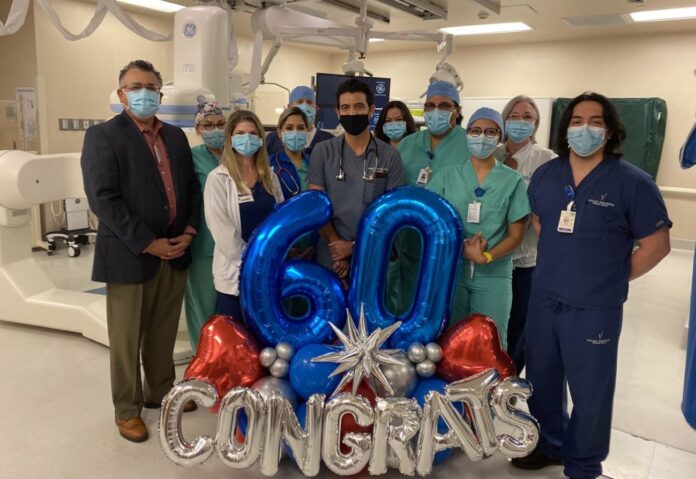Valley Regional Medical Center celebrated the hospital’s Cath Lab and Dr. Jaime Gomez’ 60th vascular robotics procedure.
Valley Regional Medical Center added to its vascular program the first and only FDA-cleared medical device to bring robotic-assisted precision to coronary angioplasty procedures.
Vascular robotics offers physicians and patients a minimally invasive technology that improves the precision of stent and balloon placements. Combining the enhanced visualization of the X-ray images with robotic precision transforms angioplasty procedures, ultimately improving patient care.
Sitting away from the X-ray source in a radiation-protected cockpit, physicians are able to use a joystick to advance the interventional devices, millimeter by millimeter through the artery. It also reduces radiation exposure during the procedure for physicians.
Valley Regional Medical Center is the first and only medical center in Cameron County to launch a Vascular Robotic Program.
Coronary artery disease (CAD), characterized by plaque buildup that restricts blood flow in the arteries, is a widespread and life-threatening condition. It is the most common form of heart disease.
Traditionally, percutaneous coronary intervention (PCI), commonly known as an ‘angioplasty,’ is the most common treatment for CAD. In this procedure, a balloon is used to physically open an artery blockage and help improve blood flow. During an angioplasty, interventional cardiologists often use stents, a wire metal mesh tube, to prop open the artery and keep it open following the procedure. While angioplasty procedures remain one of the most frequently performed procedures in the United States, with approximately 900,000 cases annually, the procedure itself has remained largely unchanged for decades.





